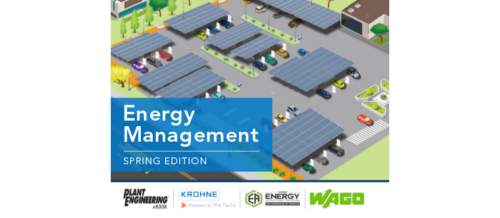In depth: 2011 so far, according to Jason Speer
Plant Engineering asked Jason Speer, vice president and general manager of Quality Float Works, about productivity, manufacturing recovery, and the challenges he’s faced at his plant in 2011.
Beyond his role as vice president and general manager of Quality Float Works, Jason Speer also has extensive experience on the national level as a member of the U.S. Dept. of Commerce’s Small Business Advisory Board. Quality Float Works also was the 2008 winner of Plant Engineering’s Top Plant Award.
PE: What initiatives have you undertaken to get more productive within your own plant?
Speer: We have focused on doing what we do best and have outsourced other areas of production that take away added time and labor from being efficient in our production. This includes buying more finished materials and working with a local vendor to help produce some components used in our production line. Adjusting our operations in this manner has allowed us to be much more cost-effective and run at optimal efficiency.
PE: What’s been the biggest surprise in the manufacturing recovery so far?
Speer: “Just in time” deliveries are the new normal. Every customer wants to make an order last-minute with a scheduled delivery within a week of ordering. Most of what we do is custom, so this has presented a big challenge for us—it means holding more inventory in stock or producing parts we know some customers will need in advance.
I’ve also been surprised by how many markets are still woefully untapped. I recently got back from a trade mission to Iraq and was shocked at how much opportunity existed from a customer base that is experiencing great infrastructure needs and could really benefit from access to our products.
Opportunities also exist in Korea, Columbia, and Panama. The hurdles and delay surrounding the pending U.S. Free Trade Agreements with these countries is very surprising and disappointing. There is so much potential for the manufacturing sector to make gains by leaps and bounds if we have access and opportunity to tap into the global marketplace.
PE: What are the biggest internal obstacles to a successful manufacturing operation? What are the biggest external obstacles?
Speer: Our biggest obstacles internally come with managing an ever-changing production flow. We’ve seen ebbs and flows with the orders coming into Quality Float Works over the past few years, and it can be very difficult to manage and accurately forecast our purchasing and inventory control.
Externally, our biggest obstacle continues to be threat and implementation of new government regulations. We spend a great deal of time and energy working to stay on top of what is happening at both the state level and in Washington to ensure we are protected and in compliances with guidelines and rules.
Often times, small businesses like Quality Float Works can be a casualty of the process by over-regulation and rules meant to impact only publicly traded companies. However, if we are part of those larger companies’ supply chains, we get lumped into the same compliance requirements—costing us added time, energy, and expense we do not have.
PE: You see successful manufacturing operations all the time. What characteristics do they have in common?
Speer: The key shared characteristic of successful manufacturing operations comes down to good relationships with customers, vendors, and employees. Without this, you have nothing. There is also so much we can learn from others in the industry; there are multiple benefits that come from networking, on both a personal and professional level.
Networking is about building relationships; the practice is the foundation of good business and is definitely a two-way street. It is a great tool for sharing battle wounds and gaining new insight on how others in a shared industry have faced and overcome industry challenges. There is an undeniable benefit in learning how others in the same arena are achieving new levels of success.
In short, networking is the key to personal and professional growth—and instrumental to growing your bottom line. The primary benefits are seen by the growth of business, new opportunities, and filling a sales pipeline through reaching out to people and starting a conversation about shared interests.
Return to 2011 Mid-Year Report: Grading on the curve.
Do you have experience and expertise with the topics mentioned in this content? You should consider contributing to our CFE Media editorial team and getting the recognition you and your company deserve. Click here to start this process.


